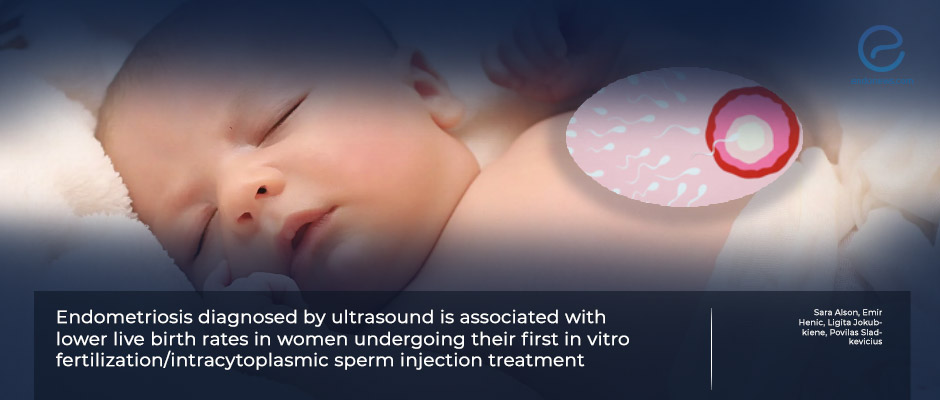Can Endometriosis Affect the Chance of Giving Birth to a Live Baby?
Feb 27, 2024
Women with deep infiltrating endometriosis/endometrioma seem to have a lower live birth rate after their first IVF/ICSI compared to women without endometriosis.
Key Points
Highlights
- Women diagnosed with deep infiltrating endometriosis and/or endometrioma using transvaginal ultrasound who are undergoing their first in vitro fertilization or intracytoplasmic sperm injection have a lower live birth rate than women without endometriosis.
Importance
- The exact cause of the lower live birth rate in women with deep infiltrating endometriosis or endometrioma is not known and should further be analyzed.
What’s done here
- Researchers conducted a prospective observational cohort study on more than 1000 women with subfertility.
Key results
- The cumulative live birth rate of women with deep infiltrating endometriosis and/or endometrioma was lower than that of women without endometriosis.
Limitations
- All women were not given the same treatment due to ethical concerns.
- Only the outcomes of the first IVF/IVSI treatment were analyzed.
- Endometriosis was not confirmed with laparoscopy followed by histopathological examination.
- Other factors that may affect the chance of live birth were not considered.
Lay Summary
Deep infiltrating endometriosis and/or endometrioma diagnosed by transvaginal ultrasound is associated with a lower chance of giving birth to a live baby in patients undergoing their first in vitro fertilization (IVF) or intracytoplasmic sperm injection (ICSI), according to a new study published in the journal Fertility and Sterility. However, the exact cause of this finding is not clear.
In order to assess the live birth rate following the first IVF or ICSI in women with deep infiltrating endometriosis and/or endometrioma compared to women without the diseases, a team of researchers led by Dr. Povilas Sladkevicius from the Department of Clinical Sciences, Lund University and the Department of Obstetrics and Gynecology, Skåne University Hospital, in Malmö, Sweden conducted a prospective observational cohort study in 1,040 women, ages 25 to 39.
All women were undergoing either IVF or ICSI for the first time. Around a quarter of them (234 women) were diagnosed with deep infiltrating endometriosis or endometrioma using transvaginal ultrasound.
The cumulative live birth rate in all women was 41%. The cumulative live birth rate in women with deep infiltrating endometriosis and/or endometrioma, on the other hand, was 33.3% while that of women without the diseases was 43.2%.
The researchers also calculated that the crude relative risk for cumulative live births for women with the diseases was 0.77. After adjustments for age, body mass index, serum levels of antimüllerian hormone, stimulation protocol, and day for embryo transfer, the relative risk was 0.63. The researchers found no difference in the number of retrieved mature eggs, fertilization rate, or good-quality embryos between patients with deep infiltrating endometriosis and or endometriomas and women without.
Future studies should assess whether women with the diseases could achieve the same cumulative live birth rate as women without the diseases after repeated cycles of IVF and/or ICSI, the authors of the study said. “Future studies will also reveal whether a concurrent presence of adenomyosis diagnosed with [transvaginal ultrasound] affects the IVF/ICSI outcome”.
Research Source: https://pubmed.ncbi.nlm.nih.gov/38246403/
deep endometriosis endometrioma live birth rate IVF ICSI

